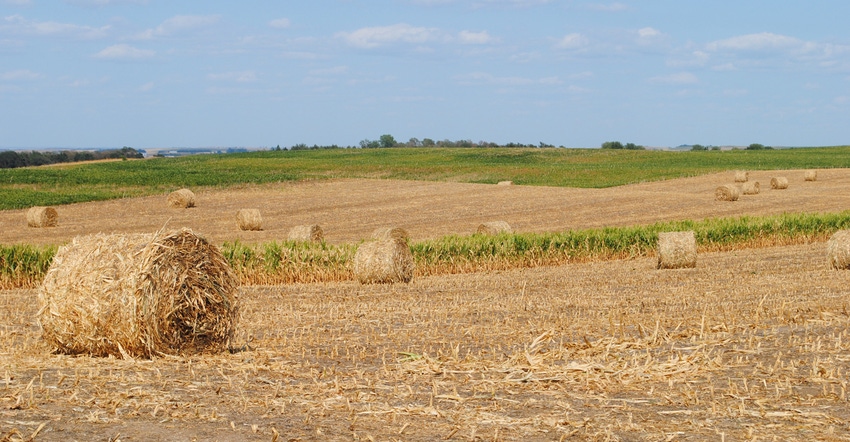October 4, 2022

High feed costs mean every forage is important this year, even those that may be high in nitrates because of stress from drought. Feeding these forages requires testing and careful management. Are you prepared?
Some plants are more likely to be high in nitrates than others. Annual grasses such as cane, millet, oats and even corn often have elevated nitrate levels. So do certain weeds such as pigweed, kochia and lambsquarter.
If your hay has lots of these weeds or is an annual grass, be alert to the potential for high nitrates.
Test first
To ensure we know what we are up against, testing any feed suspected of being high in nitrates is a good idea. Even when tests come back high, it doesn’t mean these feeds always are toxic, nor does it mean that high-nitrate feeds can’t be used safely.
Nitrates are usually at their highest concentrations toward the bottom of the plant. Avoiding these areas of highest concentration when grazing or haying lowers risks.
When grazing, providing plenty of water and alternative feed while introducing animals slowly to high-nitrate forages can lower initial risk. Once again, keeping animals from grazing too short will also help.
If haying, test cured bales and mark those high in nitrate. We can then make a plan to feed these bales safely. Diluting the diet with grain or low-nitrate forages is most common. Frequent, small meals that slowly increase the amount of nitrate fed helps cattle adapt to high-nitrate hay. And again, ensure access to fresh water.
Silage reduces risk
Silage harvest, unlike grazing or hay, has the potential to actually reduce nitrate levels in a feed up to 50%. Proper fermentation is essential for this to happen and to ensure a quality feed, so make sure to watch moisture levels, pack well and cover silage once chopped.
Nitrate concerns are nothing to sneeze at, but with the right tools, can be managed safely. Keep animals from using lower portions of a plant that have highest concentrations and work them up to high-nitrate feeds slowly. Test hay you think may have an issue, especially annual grasses and hay with a high percentage of weeds.
If tests come back high, plan to feed safely by dilution, or gradually increase the amount of the feed to adapt animals to it. Silage may be the preferred option for those looking to reduce nitrate levels as opposed to managing risk.
Source: UNL Pasture and Forage Minute, which is solely responsible for the information provided and is wholly owned by the source. Informa Business Media and all its subsidiaries are not responsible for any of the content contained in this information asset.
You May Also Like




